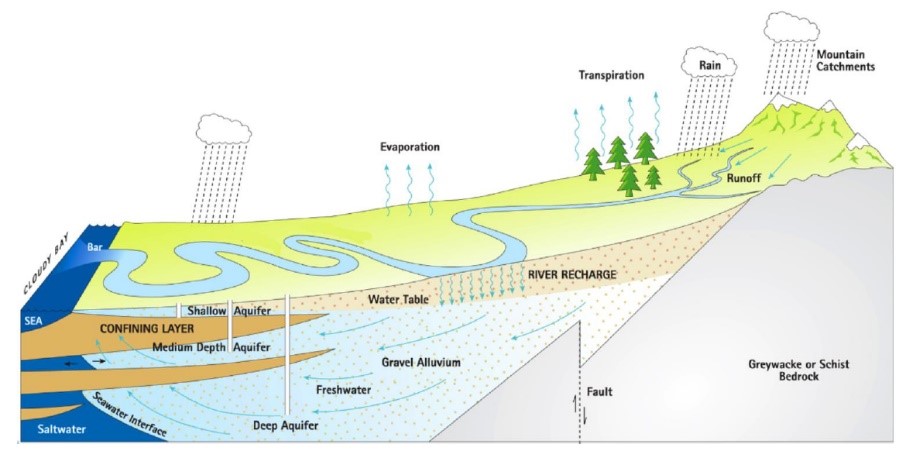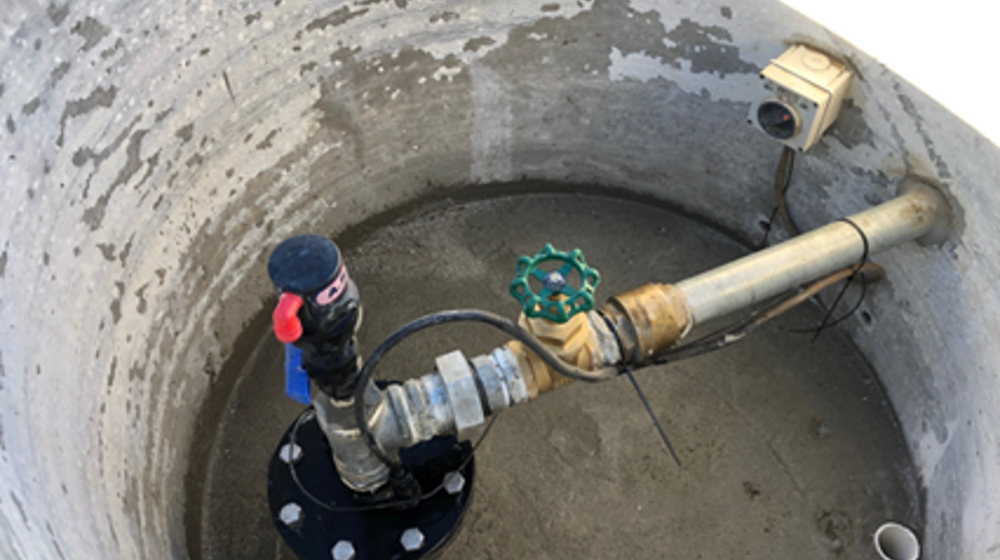-
-
-
-
-
-
-
Groundwater
-
-
-
-
-
-
-
-
-
-
-
-

is naturally flowing back to the surface
Groundwater is a precious resource that forms an important part of the water (hydrological) cycle. It is water that has infiltrated deep into the ground through spaces and cracks in the soil, sand, and rock, and pools in geological formations called aquifers.
Groundwater can be extracted from aquifers through bores or wells using surface or submersible pumps for agricultural and industrial purposes or for drinking water. It can also flow freely back to the surface at springs or wetlands.
The water cycle is the continuous movement of water through the environment, where it evaporates from the oceans and land, condenses into clouds, falls as precipitation (i.e. rain, snow, and hail), flows into rivers and back to the sea.
However, the water cycle contains another part that is often not considered – groundwater. This is an important component, as rainfall doesn’t only reach rivers by running over the land surface. Most of the rainfall will soak into the ground, where some of it will be taken by plants and returned to the atmosphere (transpiration). Some water will then soak further down and infiltrate towards the saturated zone, becoming groundwater. It then flows from its infiltration area to points of discharge, which can be a river, spring, wetland, or the ocean (source: UK Groundwater Forum).

Although there is a lot of water underground, its flow rate depends on the permeability of the underlying geological formations, with little flow through low permeability materials such as clay and higher flow through permeable materials such as gravel. Aquifers are geological units that are sufficiently permeable to yield useful volumes of groundwater. The aquifers in Otago are composed of various rock and soil deposits, with gravels and sand being the most common. Although Otago’s aquifers are smaller than the extensive ones found in regions like the Canterbury Plains or Hawke’s Bay, they provide a critical source of water.
Groundwater can also significantly impact the quality, quantity and ecology of surface water bodies such as rivers and lakes that are connected to groundwater. Although groundwater is largely underground and ‘out of sight’, it is important to monitor and protect the quality and quantity of this resource.
ORC monitors groundwater quality and levels across Otago through its State of Environment (SoE) programme, a requirement under the RMA. There are 55 bores across Otago that ORC monitors, with 35 of these bores having continuous automated monitoring of groundwater levels.
Groundwater quality is monitored. ORC collects samples from more than 55 bores across Otago every quarter and these are analysed in an accredited laboratory. The analysis tests for microbiology (E. coli), major anions/cations (e.g. chloride, magnesium, calcium, etc.), metals (e.g. arsenic), and nutrients (nitrate, ammonia, and Dissolved Reactive Phosphorus).

LAWA groundwater results
You can find the results of ORC’s groundwater quality and levels on the LAWA website.

Wells Aotearoa NZ
Through the Wells Aotearoa New Zealand website, Te Uru Kahika presents data on wells, geothermal bores and galleries, on location, construction, geology and more.

Environmental Data Portal (EDP)
You can find the results of monthly water quality monitoring in the environmental data portal.
In March 2021, ORC published its first state of the environment of groundwater quality in Otago report. The report showed that groundwater quality varies greatly across Otago, with some areas of good groundwater quality and degraded quality in others. It has also highlighted some groundwater quality issues in the region:
- High concentrations of dissolved arsenic in the Upper Clutha/Central Otago/Queenstown Lakes area – the source of the arsenic is likely to geologic, i.e. the prevalent schist geology.
- Elevated E. coli in many bores across the region.
- Elevated nitrate concentrations, particularly in North Otago.
These results indicate that, although some groundwater quality issues are naturally occurring, it is important for bore owners to regularly test their water in an accredited laboratory. This is particularly important as the ORC’s SoE network only covers a small number of bores across a large area, hence bore owners need to test the water of their own bores.

Reports and publications - groundwater
Groundwater is a source of recharge for lakes, rivers, and wetlands. It's found underground in the spaces and cracks in the soil, sand, and rock and it moves slowly through geologic formations called aquifers.

Reports and publications - channel morphology
The terms river morphology or channel morphology are used to describe the shapes of river channels and how they change in shape and direction over time.

